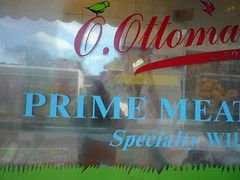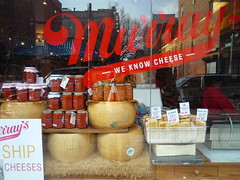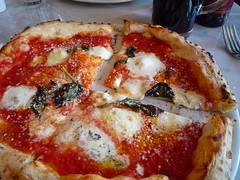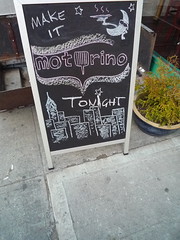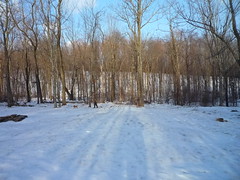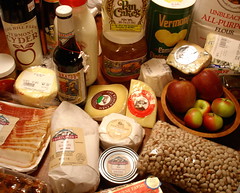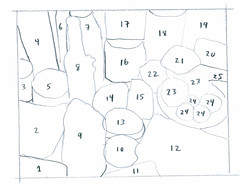The Gifts of the Vine
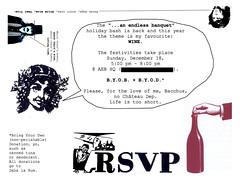 fig. a: "...drink wine, feel fine!"
fig. a: "...drink wine, feel fine!"
This year we were pretty single-minded when it came to our annual AEB holiday bash: it was all about the wine. Sure, we still made plenty of food to serve to our guests, but everything was meant to encourage hours of focused oenophilia.
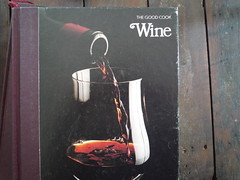 fig. b: wine by Olney
fig. b: wine by Olney
We imagined a party that would inspire our guests to bring an interesting bottle or two, uncork them, share generously, and drink deeply. We imagined a party that would be 100% free of Château Dep.* We imagined a party we might have invited both Richard Olney and Kermit Lynch to.
 fig. c: big burgundy
fig. c: big burgundy
It worked! We had people who called us in advance of the party and said, "Yes, but what kind of wine?" To which we responded, "Think beef Burgundy, think French cheese, think pâté." Some of these people really went all out. Some people really got into the Burgundian vibe. Some people even brought magnums.
We also imagined a wine-soaked Christmas affair, and wine-soaked it turned out to be. I'm not sure if it was just the effects of all that wine piled on top of the effects of all those delicious French '75s (Champagne, gin, lemon, sugar) that we started out the evening with, but this year's edition was easily the most bacchanalian AEB xmas party in the eight years (!) we've been throwing this party. Mission accomplished!
This was the menu that did it all:
French '75 punch
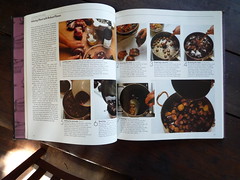 fig. d: Beef Burgundy by Olney
fig. d: Beef Burgundy by Olney
boeuf à la Bourguignonne (follow the link for our recipe)
cheese platter (featuring the most extraordinary Vacherin Mont D'Or)
baker's foie (recipe follows)
baked, stuffed onions à la Olney (follow the link for Michelle's recipe)
baked mushrooms à la Joe Beef (recipe follows)
marinated beet salad
bitter greens salad
oysters on the half shell (TY, F.!)
Far Breton
panforte
Christmas cookies
Mandarin oranges (lots and lots of 'em!)
And here are a couple of the featured recipes:
The first is an adaptation of an incredibly simple and drop-dead lovely pâté de foies de volailles recipe from Chad Robertson's Tartine Bread. This pâté is a stunner. We had some guests who told us it was the single best thing they'd ever tasted. Ever. Like I said, it's really good, and as easy as a pâté recipe gets. You can also use chicken livers, but duck livers really make it.
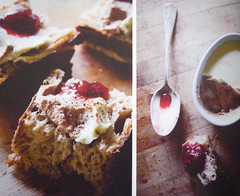 fig. e: baker's foie
fig. e: baker's foie
Baker’s Foie
1 small shallot, finely chopped
6 black peppercorns
1/4 cup sugar
1/2 cup water
6 duck livers
olive oil
1 tbsp fresh thyme, leaves only
6 tbsp unsalted butter, at room temperature
1/2 cup cognac
1/2 tsp salt
for the cognac butter:
3 tbsp unsalted butter, at room temperature
1 tbsp cognac
pinch of salt
Make a simple syrup by mixing the sugar and water in a saucepan and bringing to a simmer. Add the chopped shallot and black peppercorns and bring back to a simmer. Poach the shallots and pepper in the simple syrup for ten minutes. Strain the shallots and peppercorns and set aside. Discard the simple syrup.
Rinse the livers in cold water and remove any visible fat or connective tissue. Heat a heavy skillet over high heat and add enough olive oil to coat the bottom of the pan. When the oil begins to smoke, carefully add the livers and sear for about 30 seconds. Quickly turn the livers and sear for another 30 seconds. Add the thyme and cook for a few seconds until it is aromatic. Remove the pan from the heat and pour off the excess oil and fat. While the pan is still hot, add 2 tablespoons of the butter and 1/4 cup of the cognac, and deglaze the pan, stirring to loosen any brown bits sticking to the bottom. Transfer the contents of the pan to a food processor, add the candied shallots, and let cool for 8 to 10 minutes.
Once the livers have cooled, add the remaining 4 tablespoons butter to the food processor and process to a thick puree. Add the salt and the remaining 1/4 cup cognac and process again. Taste and add more salt if needed. Pour the liver puree into ramekins or into a suitably sized loaf or pâté pan.
To make the cognac butter, place the butter in a small bowl. In a small saucepan, heat the cognac until it is hot to the touch. Add it to the butter along with the salt. Stir the butter until it has a liquid consistency and then pour it evenly over the pâté. Cover and refrigerate until the cognac butter has set. Serve cool or at room temperature with toast or bread or crackers.
[based closely on a recipe that appeared in Chad Robertson's Tartine Bread]
The second is another crazy-easy, crazy-tasty recipe, this time from our good friends at Joe Beef. The Art of Living According to Joe Beef states that, "This dish is best prepared in a cast-iron frying pan, served family style at the table," and they're right--the sight and the smell makes people go wild. Another wickedly good hors d'oeuvre!
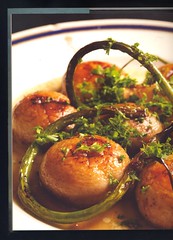 fig. f: baked shrooms
fig. f: baked shroomsBaked Mushrooms with New (or Old!) Garlic
16 large white mushrooms, stem ends trimmed
1/4 cup unsalted butter
1 tbsp olive oil
salt and pepper
1/4 tsp smoked paprika
2 garlic flowers or garlic cloves (in season)
6 sprigs thyme
Preheat the oven to 450º F. Score each mushroom cap with shallow cuts about 1/8 inch deep. Spread the butter and oil in the bottom of a heavy ovenproof pan. Season the bottom of the pan with salt, pepper, and the paprika. Place the mushrooms, cap down and side by side, in the pan. Tuck the garlic flowers (if using) and thyme among them.
Bake the mushrooms for 18 to 20 minutes, or until the pan juices are bubbling and the mushrooms have shrunk and roasted. Serve bubbly.
[recipe from The Art of Living According to Joe Beef: A Cookbook of Sorts by Frédéric Morin, David McMillan, and Meredith Erickson]
That spread got demolished! We had just enough beef burgundy for leftovers the next day, but otherwise those vineheads cleaned us out. But they paid us back in laughs, memories, outrageous behaviour, and all-around good times.
Hope you've enjoyed the holiday season this year. All the best in 2012!
aj
* If you're not from Québec, this is local parlance for the abysmal, insanely overpriced vins ordinaires that are available from our supermarkets and dépanneurs (corner stores), hence the name. Why the government, which otherwise holds a monopoly over the sale of alcohol (with the exception of beer, which, again, is largely available from the deps and supermarkets) in this province, should feel that the sale of sub-grade wine at every corner store and supermarket in Quebec is acceptable is another matter.
